Art World
Want to Visit Frida Kahlo’s Avant-Garde Art Studio? Here Are 9 More Historic Artists’ Homes You Can See on Google Street View
See what artists' dwellings look like from the privacy of your own home.
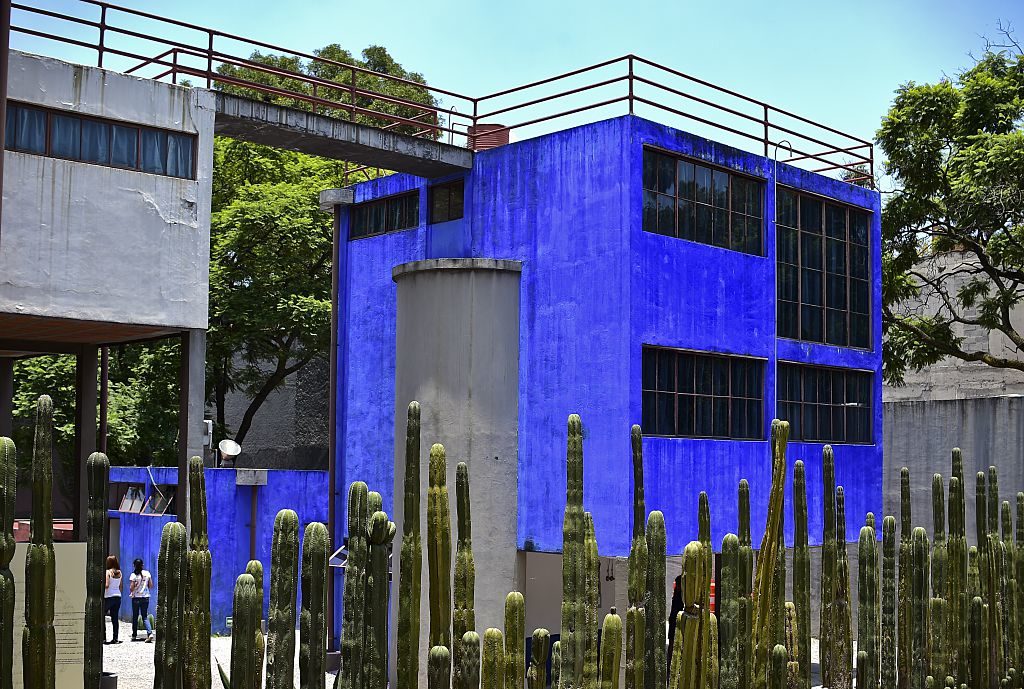
See what artists' dwellings look like from the privacy of your own home.

Artnet News

Earlier this summer, we began searching for famous artist’s studios using Google Maps’s street view feature, and—spoiler alert—we’re now hooked.
It’s fascinating to get glimpses into the environments in which artists worked, from the inspiring vistas of Alexander Calder’s remote Roxbury estate to the splendid estate of Max Liebermann. Here are 9 of those famous abodes, which you can see for yourself on Google.
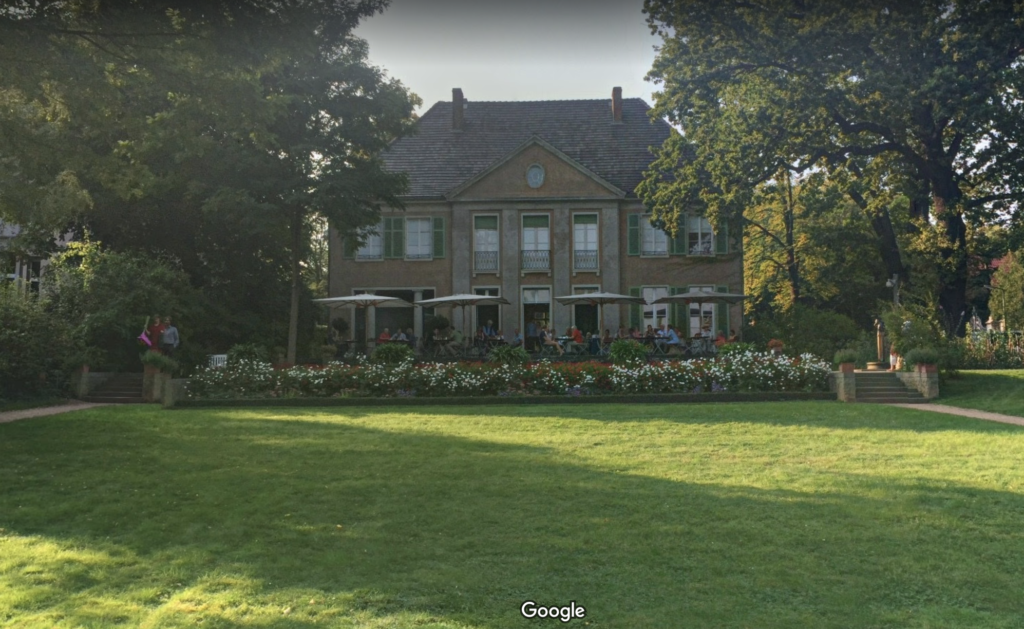
Max Liebermann’s summer home and studio outside of Berlin on Google Street View.
What: In 1909, the German Jewish painter Max Liebermann acquired an exquisite plot of lakeside land in Berlin overlooking Wansee, where he built a summer residence and studio. It was the most exclusive villa district in the city at the time. Liebermann died in 1935, and his widow, Martha, was forced to sell their beloved home to the Nazis in 1940. She died by suicide shortly before she was due to be taken to a concentration camp in 1943. A year earlier, the Nazis held the notorious Wannsee Conference
to plan the genocide of Europe’s Jewish population at another villa nearby. The Liebermann home and its beautiful garden are now a memorial museum.
Where: Colomierstraße 3, 14109, Berlin, Germany
Interesting Fact: During World War II, the Liebermann villa became a hospital, and the artist’s studio was used as an operating theater.
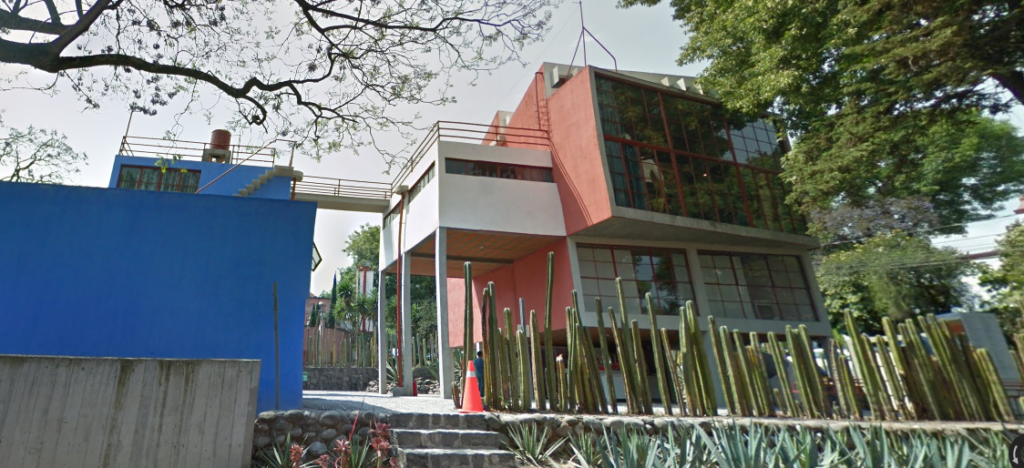
The Diego Rivera and Frida Kahlo studios in Mexico City on Google Street View.
What: Diego Rivera lived and worked in the big red house and Frida Kahlo in the smaller blue one. A roof-top bridge connected the famous couples’ high Modernist studios, which were designed by their friend, the architect and painter Juan O’Gorman, in the early 1930s. The young architect’s own studio was next door. Together they formed a remarkable compound in a suburb of Mexico City that is said to be the first example of functionalist architecture in Latin America. Now a museum, the artists’ studios are a site of pilgrimage for all Rivera and Kahlo fans.
Where: Diego Rivera s/n, San Ángel Inn, 01060 Ciudad de México, CDMX, Mexico
Interesting Fact: Rivera asked O’Gorman to make his studio big enough to house the artist’s “idols”—Rivera’s collection of pre-Colombian art—which you can still see there today.
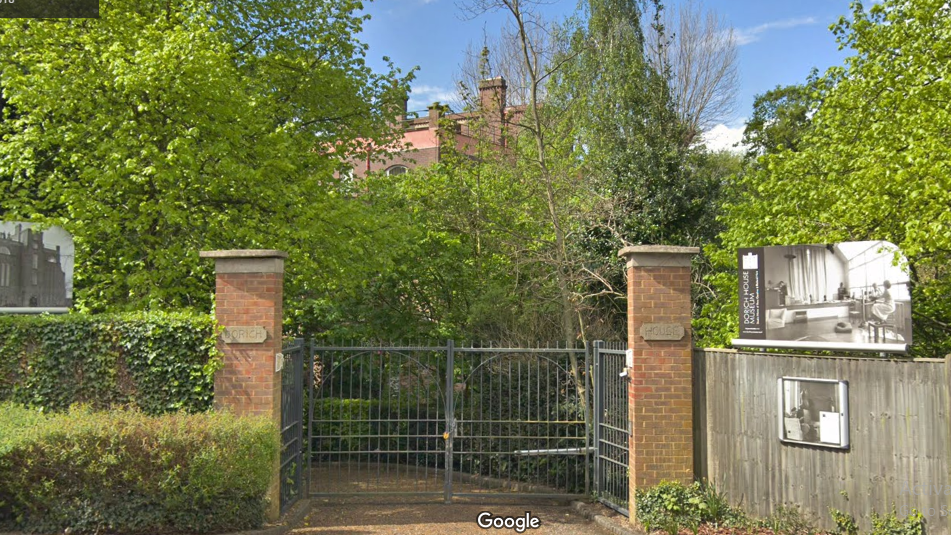
Dorich House, the home and studio of Dora Gordine, on Google Street View.
What: Behind a tall hedge on an ordinary suburban street in South London stands Dorich House, the extraordinary home and studio that the sculptor Dora Gordine built with her second husband. Born in Latvia, Gordine lived in Paris in the 1920s, moved to East Asia with her first husband in 1930, and then went to London, where her work was already celebrated. Dorich House, which Gordine designed herself, combines the the Art Nouveau elegance of her childhood homes in Tallinn, Estonian, with touches of Asian architectural influence and a Le Corbusier-style roof terrace. It is an gem filled with Gordine’s sculpture and fragments of the collection built by her husband, the scholar Richard Hare.
Where: Dorich House Museum, 67 Kingston Vale, London, SW15 3RN
Interesting Fact: Talented, charismatic, and elusive about her background, Gordine never revealed where nor when she was born. The child of middle-class Russian Jews, she reinvented herself in Paris, adding an “e” to her name.

Porthmeor Studios, Cornwall on Google Street View.
What: Artist Ben Nicholson had a space in the historic Porthmeor Studios building, which is still a working studio. The former pilchard fishing building was colonized by artists from the 1880s. They fell in love with the light in the north-facing lofts that look out over the sea. Other famous artists who worked in Porthmeor include Francis Bacon, Patrick Heron, Terry Frost, and Wilhelmina Barns-Graham. Bacon only spent a winter in St Ives, but it was here that he produced pieces for his first show with Marlborough Fine Art in London in 1960.
Where: Back Road West, St Ives, Cornwall, TR26 1NG
Interesting Fact: The artist Mark Dion’s installation, The Maritime Artist, can be found in the pilchard tanks. A tribute to the many artists inspired by the Cornish coast and its fishing industry, the installation presents a canvas on an easel surrounded by fishing tackle and boating equipment.
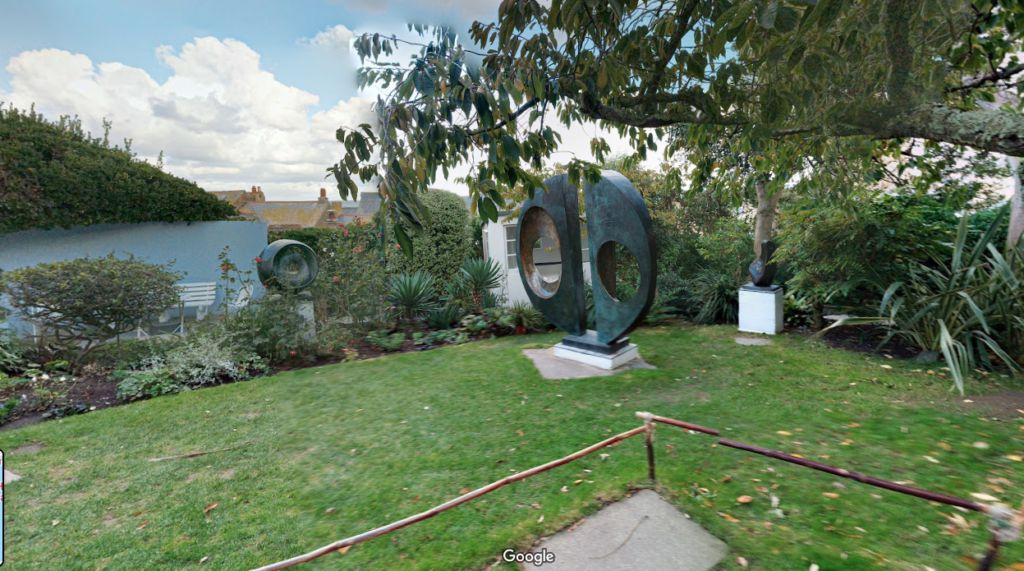
Barbara Hepworth’s garden studio in St Ives on Google Street View.
What: The sculptor Barbara Hepworth and her husband Ben Nicholson escaped the Blitz on London by staying in St Ives. They split after the war but she stayed put. Her sculpture-filled Trewyn Studio and garden, where she created many outdoor works, is now preserved by the Tate as a museum. It is worth peeping in the window of her larger studio across the street, which is closed to the public. It was the fishing town’s former dance hall, which she acquired in 1961. She needed a bigger space to make monumental commissions, such as Single Form for the United Nations building in New York.
Where: Barnoon Hill, St Ives, Cornwall, England TR26 1AD
Interesting Fact: When Hepworth and Nicholson fell in love in 1931, they were both married to other artists. It was shock to both when they had triplets.
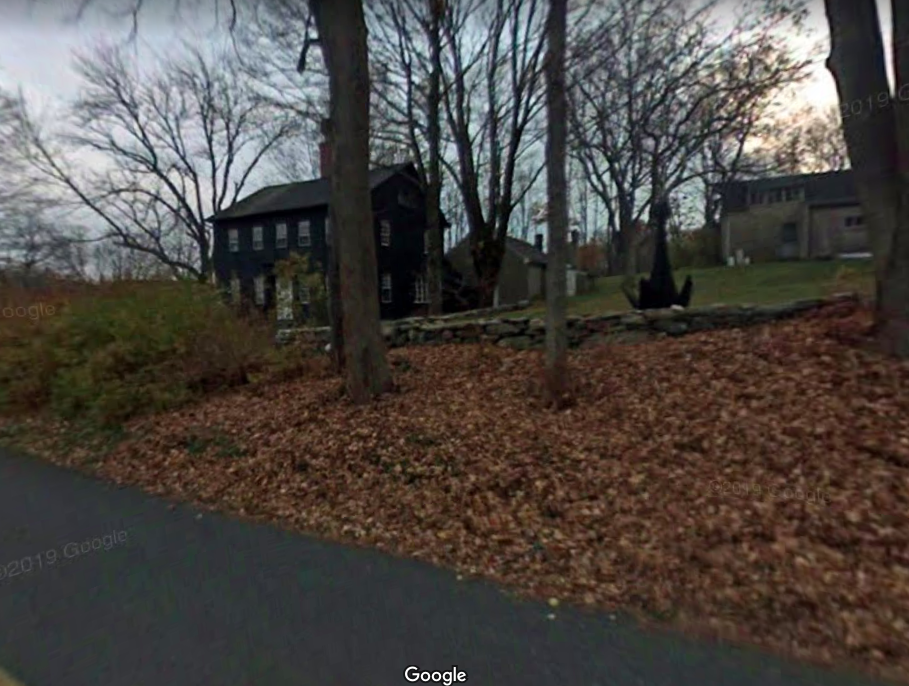
Alexander Calder’s Roxbury farmhouse and studio (to the right) as seen on Google Street View.
What: In 1933, Alexander Calder embarked on a mission to transform a rundown farmhouse in Roxbury, Connecticut, into a studio and home to share with his wife, Louisa and their growing family. The house is still standing today, and it is still owned by Calder’s family, but it is not open to the public. There are amazing photographs of the studio in the archives, filled with Calder’s artistic materials for his mobiles and stabiles. On street view, you can catch a glimpse of the home, which Calder painted black, as well as his expansive studio, and a black stabile in the garden.
Where: 306 Painter Hill Rd Roxbury, CT 06783 USA
Interesting fact: The house is filled with domestic objects that the artist hand-crafted, such as a large, boat-shaped “unspillable ashtray” that he brought out when he used to throw epic, days-long samba parties.
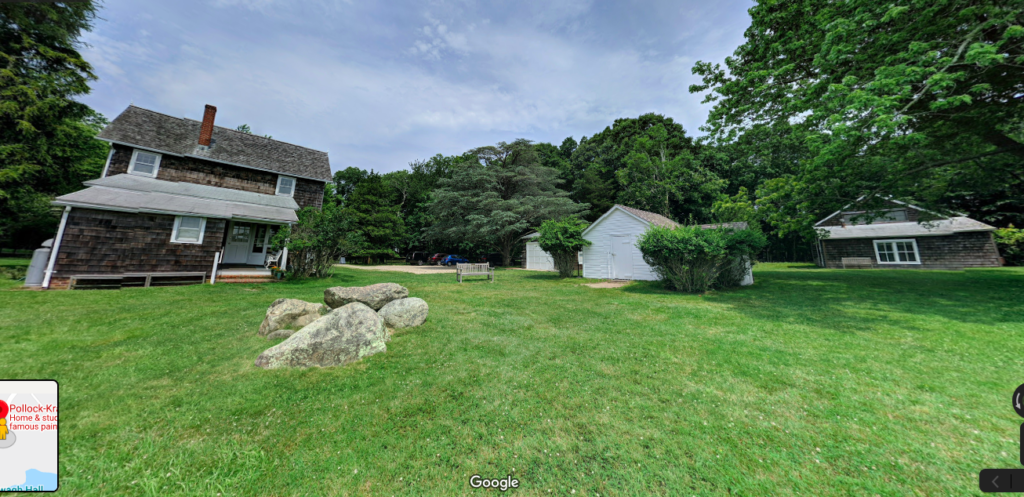
Lee Krasner and Jackson Pollock’s house, and Pollock’s studio barn (far right) as seen on Google Street view.
What: The artist couple Lee Krasner and Jackson Pollock bought this East Hampton house in 1945. Krasner used the upstairs bedroom of the house for a studio, while Pollock repurposed a barn next to the property for his.
Where: 830 Springs Fireplace Rd, East Hampton, NY 11937, USA
Interesting fact: Peggy Guggenheim gave the couple $2,000 for the down payment on the $5,000 house in exchange for some artworks.
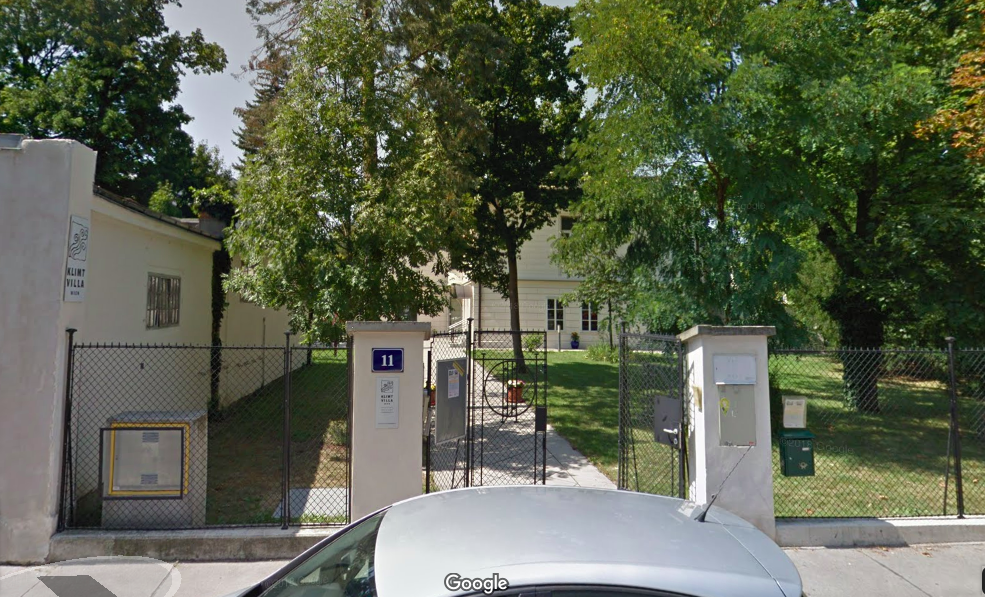
The Klimt villa in Vienna as seen from Google Street view.
What: Beginning in the summer of 1911 until his death in 1918, Klimt worked and sometimes lived in a small laid-back cottage with a wild garden packed with flowers, fruit trees, and songbirds. In 1923, the small Biedermeier house was torn down and replaced with a neo-baroque villa, which is what you see today on the site. The villa is now open to the public, with part of its ground floor reconstructed to resemble Klimt’s original studio space.
Where: Feldmühlgasse 11, 1130 Vienna, Austria
Interesting Fact: The studio became a meeting place for artists working in fin-de-siècle Vienna. They included Egon Schiele and Felix Albrecht Harta. Schiele and Klimt’s partner, the avant-garde fashion designer Emilie Flöge, tried in vain to save the studio from being torn down.
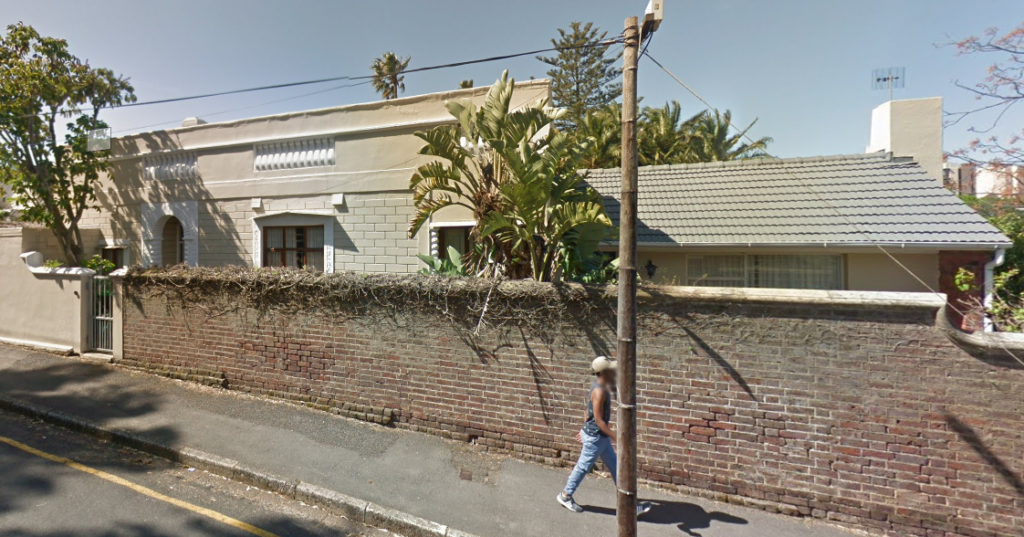
The Irma Stern house in Capetown as seen from Google Street view.
What: The Cape Town home and studio of the South African Expressionist Irma Stern is full of her paintings, sculptures, and her eclectic collection of artifacts. Born in 1894 to German Jewish parents, she became an artist in Germany. The Die Brucke painter Max Pechstein was quick to spot her talent. An outsider in conservative Cape Town, she was South Africa’s most successful artist, representing it at several Venice Biennales in the 1950s. She traveled extensively throughout her life, in particular to Zanzibar and what was then the Belgian Congo, painting vibrant portraits of the inhabitants as well as colorful landscapes. Her Cape Town home from 1927 until her death in 1966 is now a museum.
Where: 25 Cecil Rd, Rosebank, Cape Town, 7700, South Africa
Interesting Fact: In the 1920s, the African-American writer Alain LeRoy Locke argued that Stern’s work should be emulated by black artists of the Harlem Renaissance.